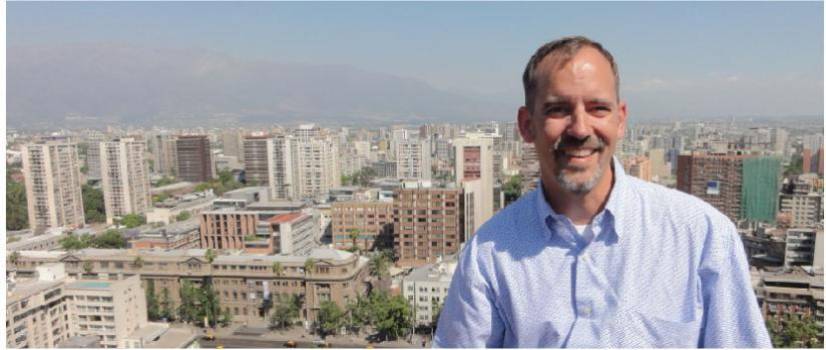The College of Arts and Sciences research associate professor promotes a better understanding of the environmental and cultural features of the state through his role as director of the S.C. Geographic Alliance. That effort feeds into his role as editor of the Atlas of South Carolina, which highlights the state’s geography in easy-to-understand graphics and information.
The atlas then serves as a teaching tool for Mitchell’s summer school graduate students, who are preparing for teaching careers. They take the knowledge gleaned in the graduate course into K-12 classrooms, and some of their students one day could end up in Mitchell’s undergraduate Geography of South Carolina class.
The process, like everything in geography, takes time. Mitchell, who earned his doctorate at USC in 1998 and returned to the faculty 10 years ago, still finds many of the South Carolinians in his undergraduate course have only basic, local knowledge on the geography of the state.
“They come into the class as a Carolinian thinking they know the state, and they really don’t,” Mitchell says. “This state is very provincial. Someone from the Pee Dee knows their little part of the Pee Dee but not the whole state.”
By the end of the course, the students know the state’s 46 counties, the six distinct land forms and the varied climate possibilities. More importantly, they should understand how those geographic entities impact the state’s culture and economy.
“Geography blends the physical and the social sciences together to tell the story of places, how they change over time and they change over space, and a lot of that’s interrelated,” Mitchell says. “It’s all bound around why places are unique and different.”
Mitchell was drawn to geography during a class on natural disasters, and his early scholarly work leaned to disaster preparation and perception. He remains a faculty research associate with the Hazards and Vulnerability Research Institute at USC. He also devotes many hours to editing the Journal of Geography, an international peer-reviewed publication. His major emphasis, however, has shifted in recent years to geography education.
Mitchell wrote the state standards for teaching geography to high school students and led the six-year effort to gain approval of those standards. He proudly points to the rapidly rising numbers of South Carolina high school students taking Advanced Placement Human Geography and passing the end-of-course national test.
That has led to a few students arriving at USC with declared geography majors. More commonly, however, a first-year or second-year student in some other major ends up in a geography class and discovers a career path in GIS mapping or urban planning, Mitchell said.
“They take a class and have this epiphany,” he says. “They didn’t know they could do this kind of stuff in geography.”
Mitchell also teaches a Latin American geography class and has taken a small group of students to Chile for a Maymester class the past two years. The excursion is much more than a Latin American vacation. Each student serves once as a “professor of the day,” explaining how an aspect of geography impacts the Chilean culture.
For instance, one student researched the history and impact of alcoholic beverages. During a trip to a Chilean winery, the student explained the how Chile and Peru argue over which country has the best pisco, a local brandy; used a local beer with a German name to explain the immigration of Germans to Chile; and detailed how the rediscovery of a historical grape variety invigorated a new wine industry.
“They weave this narrative,” Mitchell says, “of how geography impacts the culture.”
